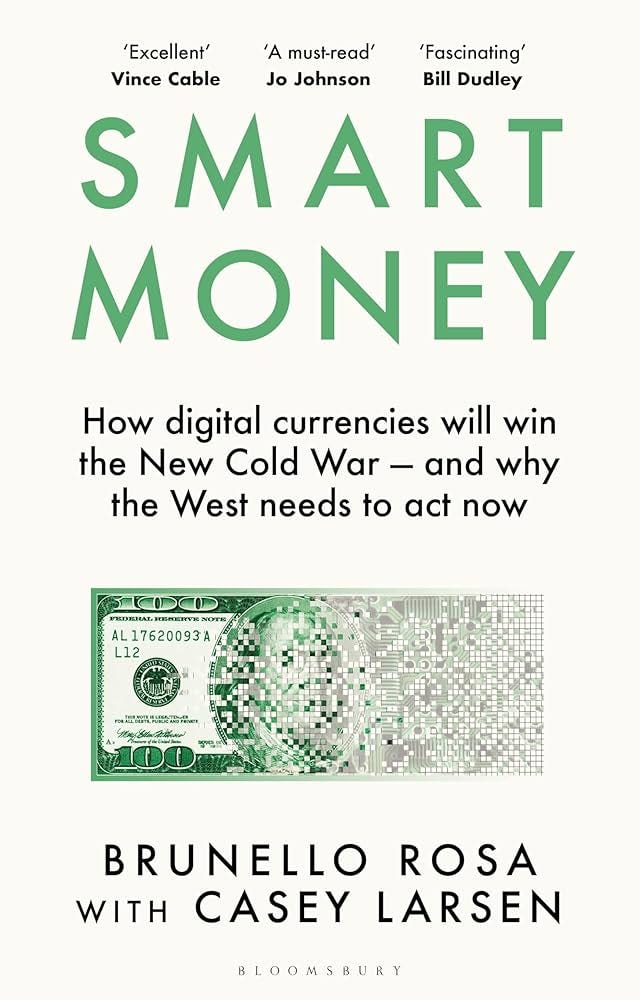Welcome to issue 1 of the Modern Risk Book Club: where curiosity meets real-world relevance. Each week, we’ll share the book that’s caught our attention, the idea that stuck, and why it might matter for people who think about risk, leadership, and change.
Smart Money: How Digital Currencies Will Shape the New World Order
Brunello Rosa & Casey Larsen (2024)
Synopsis
This book explores how digital currencies—especially state-backed ones—are reshaping the global balance of power. It’s about money, yes, but more than that, it’s about the fight to control the infrastructure of the future economy.
Why I picked it up
I’ve been trying to understand how money is evolving—not just in terms of crypto hype, but in how governments, institutions, and private actors are positioning themselves for control. This book promised a geopolitical lens on digital currencies, and it delivers.
Why it stuck with me
“Since the end of the Second World War, the US dollar has been the global reserve currency, which has ensured American dominance of the world economy. But no longer. More than a hundred countries are developing Central Bank Digital Currencies (CBDCs), digital equivalents to cash that will utterly transform how we do business at home and abroad.”
It’s not a book about Bitcoin. It’s a book about control—how states, central banks, and private actors are racing to shape the architecture of digital money in their image. Rosa and Larsen argue that digital currencies aren’t just a financial innovation, they’re a tool for geopolitical leverage and a reassertion of sovereignty in a fragmented world.
Through the lens of Modern Risk
For risk professionals, the implications are hard to ignore:
Monetary risk is becoming infrastructure risk. CBDCs, stablecoins, and programmable money will change how capital flows, how sanctions bite, and how liquidity crises spread. That reshapes FX exposure, supply chain financing, and even cyber threats.
The line between financial systems and national security is blurring. If money becomes programmable, it also becomes censorable. Organisations will need to think more seriously about where they bank, what rails they rely on, and what that says about their risk posture.
Fragmentation isn’t temporary—it’s the baseline. The book reinforces a Modern Risk theme: global integration is being replaced by selective alignment. Smart money is also strategic money.
Worth questioning
One of the tensions that runs beneath this book is the growing Western scepticism of CBDCs. Unlike the more top-down enthusiasm seen in China or the Gulf states, many Western democracies are confronting a backlash rooted in civil liberty concerns. Programmable money raises real fears: Could governments restrict transactions by location, time, or behaviour? Could monetary infrastructure be used as a tool of soft coercion (domestically or abroad)? The book makes a strong case for the inevitability of digital currencies, but it’s less clear whether liberal democracies are ready to adopt them without a fight.
For readers who enjoyed…
Principles for Dealing with the Changing World Order by Ray Dalio
The Future of Money by Eswar Prasad
Digital Gold by Nathaniel Popper
Let’s Talk About It
CBDCs get a lot of theoretical attention, but how are they being accounted for in real-world treasury, risk, or compliance strategies? Have you seen any serious corporate planning around them, or is this still mostly noise? Would love to hear what you're seeing.



